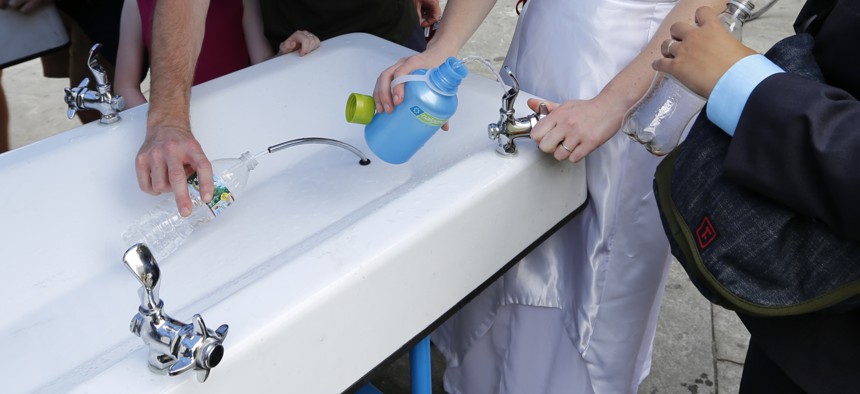Bill That Could Offer Boost to Drinking Water Systems Advances in U.S. House

Shutterstock
“We cannot fool ourselves into thinking local governments can do this on their own,” said U.S. Rep. Paul Tonko.
WASHINGTON — U.S. House lawmakers are showing interest in upping the amount of money that can go toward a program that provides low-interest loans for water infrastructure projects.
The House Energy and Commerce Environment Subcommittee on Thursday passed legislation by a voice vote that would reauthorize funding for the Drinking Water State Revolving Fund program, at a level of $8 billion for the five-year period between fiscal years 2018 and 2022.
Congress established the revolving fund program in the mid-1990s. Through it, the U.S. Environmental Protection Agency provides money states can use to extend low-interest loans for drinking water projects—specifically those needed to comply with federal drinking water regulations and to meet health goals in the Safe Drinking Water Act.
Authorization expired for the program in 2003. At that time, funding for it was authorized at up to $1 billion annually. Lawmakers have continued to provide money for the program in the years since, with levels generally in the $800 million to $900 million range in recent years.
The new House legislation would raise the annual authorization level gradually from $1.2 billion in fiscal 2018, to $2 billion in 2022.
U.S. Rep. Paul Tonko, of New York, who is the top Democrat on the Environment subcommittee, said the bill reflected a bipartisan compromise. “It is not the bill Democrats would’ve written on our own,” he said. “I believe the funding levels could and should be increased.”
Authorization bills do not necessarily guarantee a program will get a set amount of money, but instead provide program and funding guidelines. It takes an appropriation bill to provide funding.
“We’re very pleased to see increased authorization of funds for the SRF,” said Tommy Holmes, legislative director for the American Water Works Association. “It will be interesting to see what happens in between the subcommittee and the full committee,” he added.
Holmes said the money that flows through the state revolving funds is especially significant for smaller to medium sized drinking water systems and noted that the authorizing language in the bill is written to prioritize projects in places with the most immediate public health risks.
Lynn Thorp, national campaigns director for the group Clean Water Action, provided congressional testimony on the legislation earlier this year.
“There are some really positive things in it,” she said of the bill.
“We know this isn’t an appropriation,” Thorp added. “But to reauthorize at higher levels sends a signal that we need to be moving in the direction of greater investment.”
Beyond the funding levels in the House bill, Thorp highlighted two other aspects of it that Clean Water Action views favorably.
One is that the bill reauthorizes funding for the Public Water System Supervision grant program, which funnels money to state agencies to aid them with enforcing Safe Drinking Water Act requirements, and ensuring that public drinking water systems comply with other regulations.
That grant program is authorized at $150 million annually in the legislation, up from the previously authorized level of $100 million. "That's a really important pot of money,” Thorp said.
She also pointed to language in the bill that has to do with improving protection for drinking water sources from threats like industrial spills.
One provision, for example, would permit community drinking water systems to have access to information about the types of hazardous chemicals located at facilities near their source water.
Another calls for state emergency response authorities to notify state officials responsible for drinking water if there’s an unauthorized release of a substance that could harm water quality.
The legislation authorizes some spending on source water protection initiatives as well.
“Utilities don’t possess all the information about what’s upstream of them,” Holmes noted.
Environmental Protection Agency estimates indicate that public water systems in the U.S. need to invest $384 billion in infrastructure improvements over 20 years to ensure the delivery of safe drinking water, according to a Congressional Research Service report from May.
A draft House appropriations bill for the upcoming 2018 fiscal year includes about $863 million for the drinking water revolving fund.
Tonko stressed that, in his view, the federal government has a responsibility to assist local drinking water systems with upgrades.
“We cannot fool ourselves into thinking local governments can do this on their own,” he said.
Bill Lucia is a Senior Reporter for Government Executive’s Route Fifty and is based in Washington, D.C.
NEXT STORY: FedRAMP details JAB prioritization changes






